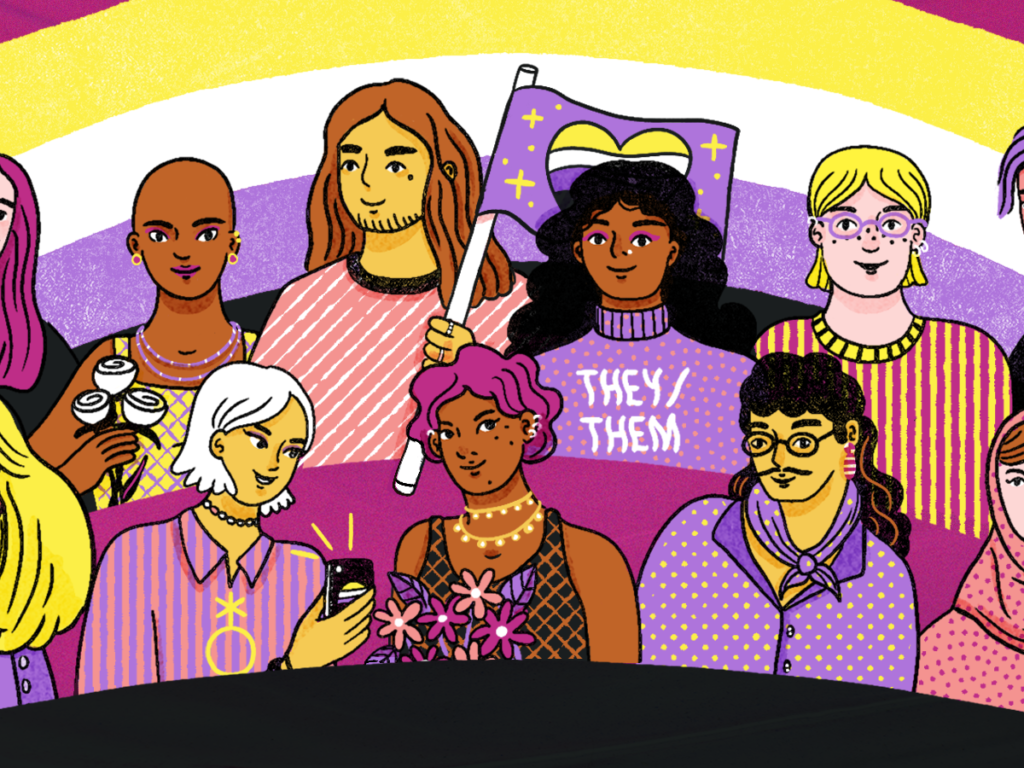Blog Post
1.2 million people in the U.S. now identifying as “non-binary” (and other stories)
A roundup of news and commentary from around the interwebs.
***
In the National Post, Tristin Hopper wonders why the government persists in restricting the movement of citizens despite the fact that “Canada’s COVID-19 lockdowns have lost all touch with reality.”
***
As Douglas Murray wondered some time ago: “What’s the difference between coming out as ‘nonbinary’ and shouting ‘look at me’?” Well, there’s a lot of shouting going on of late. Despite being a freshly-invented term of no real solid meaning, CNN has published the claims of a recent study asserting that 1.2 million people in the United States identify as non-binary. “Non-binary,” for those of you who understandably cannot keep up, means that the person identifies as neither male nor female. According to CNN:
More than half of nonbinary adults are White, at approximately 58%, but 16% are multiracial, 15% are Latinx, 9% are Black, and 2% are AAPI, American-Indian or belong to other groups, the study said. Researchers found that 42% of nonbinary adults identify as transgender, 39% identify as cisgender lesbian, bisexual or queer, and 19% identify as cisgender gay, bisexual or queer.
As most of you know, non-binary wasn’t a thing just a few years ago. Now, numbers are exploding as a lost generation seeks to find their identity.
***
If you want to know just how far down the rabbit hole we’ve fallen, 23andMe—the DNA testing outfit that reveals people’s genetic background—has come out hard for the transgender movement, for some strange reason. Their blog post is titled “Trust the Science.” What a joke.
***
Pro-lifers are pushing back against the introduction of an abortion law in Gibraltar. A referendum on legalizing abortion will be held on June 14.
***
Over at The Line, Joseph Heath has a great piece on the tactics of the woke:
When they come across something they don’t like, rather than calling for censorship on the basis of content, they will instead attempt to restrict it on the grounds that it causes harm. Of course, they are smart enough to realize that the mere fact that it upsets them is not enough to qualify as a harm. So they posit a causal connection to a more serious physical or psychological harm. For example, students who are trying to censor the expression of ideas in the classroom will claim that the discussion makes them feel “unsafe,” or that it threatens their mental health. What is crucial about this move is that it allows them to call for illiberal actions (i.e. censorship or punishment of speech) on grounds that are, in principle at least, not illiberal…
The suggestion that upsetting someone who belongs to a social group with an elevated suicide rate should count as a “harm,” sufficient to justify restrictions on speech, is not a defensible conception of harm. Young white American men who own guns also have an extremely high rate of suicide, and yet no one worries much about hurting their feelings. More generally, expanding the category of harm in this way makes it so broad that practically any action can be construed as harmful, and therefore completely undermines freedom of speech. This argument was obviously being gerrymandered to prohibit the expression of a specific view that certain people found offensive.
Read the whole thing.
***
It is interesting to me that liberals in Europe are so much more willing to criticize the trans movement than those in Canada and the United States. The Guardian, of all places, recently published a column titled “By conflating gender and sex we undermine sporting competition,” making the case that biological men identifying as women should not be allowed to compete in women’s sports. An excerpt:
By conflating gender and sex, I would argue we fudge the very reason we have sex categories in sport: the male performance advantage. Without a separate category for females, there would be no women in Olympic finals. Even in the 100m, one of the events with the smallest performance gap, approximately 10,000 men worldwide have personal bests faster than the current Olympic female champion, Elaine Thompson-Herah (10.70sec). And it’s not just track and field. While the smallest attainment gap between the sexes comes in running, rowing and swimming events (11-13%), this moves up to 16%-22% in track cycling, and between 29% and 34% when it comes to bowling cricket balls and weightlifting. The difference in punch power between men and women is a whopping 162%. Not, then, to be sniffed at. But the International Olympic Committee tweaked its guidelines in 2015 to allow athletes such as Hubbard to compete in the women’s category, provided their total testosterone level in serum is kept below 10 nanomoles per litre for at least 12 months. Transgender men [biological women] face no restrictions in the male category for obvious reasons.
I hope she’s prepared for the hatred she’s going to get after writing this. The misogynists in drag are truly hateful people.
***
More soon.








